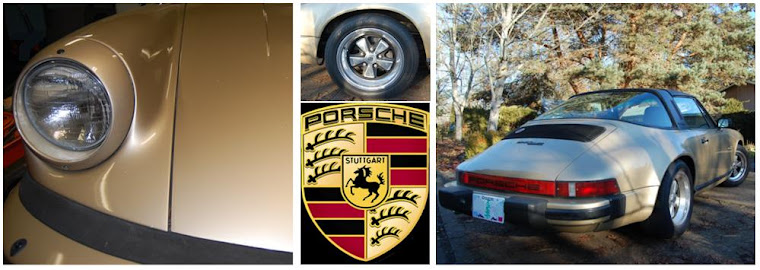The car has to be jacked up, and the rear wheels removed. The lower mount of the shock has to be removed in order to allow the suspension to completely lower removing all preload in the torsion bar.
The radius arm is removed, exposing the torsion bar seated in the torsion tube.
The rocker panel trim and the round cover in the lower corner of the wheel arch had to be removed so that the torsion bar could be removed.
The new bar is installed and the radius arm is installed.
With the extra mass and stiffer torsion bar setting the correct ride height can be tricky. When the car is in the air and there is no force on the suspension, the wheel height settles at a certain position. And when the car is lowered down, the car will compress the shocks and load the torsion bar. With extra mass, the car will settle at a lower position. With stiffer torsion bars, the car ride height will be higher. By changing the no load, angle of the radius arm, the loaded position (ride height) can be adjusted. The radius arm has a coarse and fine adjustment. For coarse adjustment, you rotate slip the radius arm onto the splines of the torsion bar in a different angles. You are limited to discrete rotational positions based on the pitch of the splines on the torsion bar. The inner rod and outer rods have different spline counts. The inner end of the rod has 40 splines for a pitch of 9 degrees, and the outer spline has 44 teeth for a pitch of 8.2 degrees. By changing the inner rod by one tooth in one direction and the outer rod by one tooth in the other direction, the rotational position of the radius arm can be adjusted in increments of 0.8 degrees, or about a ¼ inch (6 mm). I think that is a simple but clever bit of engineering. For finer adjustment, the two bolts on the spring plate of the radius arm used. The adjustment bolt has an off center collar, and by twisting the bolt, the spring plate moves up or down relative to the radius arm.
The main goal was to get the ride height back to stock, to prevent tire rub due to the added mass of the conversion. As long as the work was being done, I decided to upgrade to even stiffer spring rate to improve handling. The ride is firm, but not harsh. The roll in cornering was never bad, but now there is even less. There was a slow rolling feel to the car coming out of turns or going over rolling hills after the conversion. All of these issues are solved and I am quite pleased with the results.








No comments:
Post a Comment